In this Naked Scientists NewsFlash, we hear about the new spacecraft in orbit around the moon, an implant that can generate electricity inside the body of a cockroach and the scientific way to sound out a Stradivarius. Plus, a promising new vaccine against Hepatitis C, and a roundup of the other science hitting the headlines...
In this episode

00:17 - GRAIL Settles In Around the Moon
GRAIL Settles In Around the Moon
A pair of new American spacecraft entered orbit about the Moon over the new year period, with the aim of measuring the Moon's gravitation field in unprecedented detail. Called the Gravity Recovery and Interior Laboratory (GRAIL), the twins will descend gradually towards a low lunar orbit over coming weeks, which by March will see them skimming a mere 30 miles above the lunar landscape.
 Once there, they will begin a 90-day science mission. Following one another around the Moon at a distance of around 200 km, they will use radar ranging systems to monitor their separation with a precision of 10 micron. By tracking tiny systematic changes in the distance between them, it will be possible to measure whether some parts of the Moon's surface have stronger gravity than other parts, providing evidence for different types of rock, with different densities, beneath the surface.
Once there, they will begin a 90-day science mission. Following one another around the Moon at a distance of around 200 km, they will use radar ranging systems to monitor their separation with a precision of 10 micron. By tracking tiny systematic changes in the distance between them, it will be possible to measure whether some parts of the Moon's surface have stronger gravity than other parts, providing evidence for different types of rock, with different densities, beneath the surface.
Eventually, it should be possible to convert a complete map of the Moon's global gravitational field into a map of the Moon's subsurface geology, from the surface right down to the core. A similar technique is already being applied to the Earth by the GRACE spacecraft, launched in 2002, which have proven sensitive enough to monitor changes such as the melting of the Earth's ice sheets due to global warming.
On the Moon, these measurements will tell us about the Moon's formation history. For example, there remains the mystery of why the far side of the Moon is on average 2 km higher in altitude than the near side: a much larger discepancy than can be explained by pure chance. A recent paper suggested that the Earth once had two moons which collided at low speed, and that the lunar highlands are formed from the remnant material from the collision. If so, that collision would have left subsurface signatures, and GRAIL will be the spacecraft to look for them.
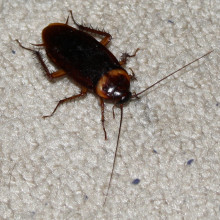
03:46 - Cockroach fueled battery
Cockroach fueled battery
There are many potential applications of electronics in biological systems. Glucose sensors, and other health monitoring systems would be extremely useful in humans or other large animals to identify health problems before they occur, or inform and control doses of medication.
One of the biggest problems is powering these devices. Conventional batteries don't last very long and are often made of toxic materials, while external power supplies are awkward and heavy. Any living biological system must have an ample source of energy, as a living thing uses energy all the time. However, this energy is normally stored chemically as sugars, so accessing this energy source in a way that doesn't damage the creature is challenging.
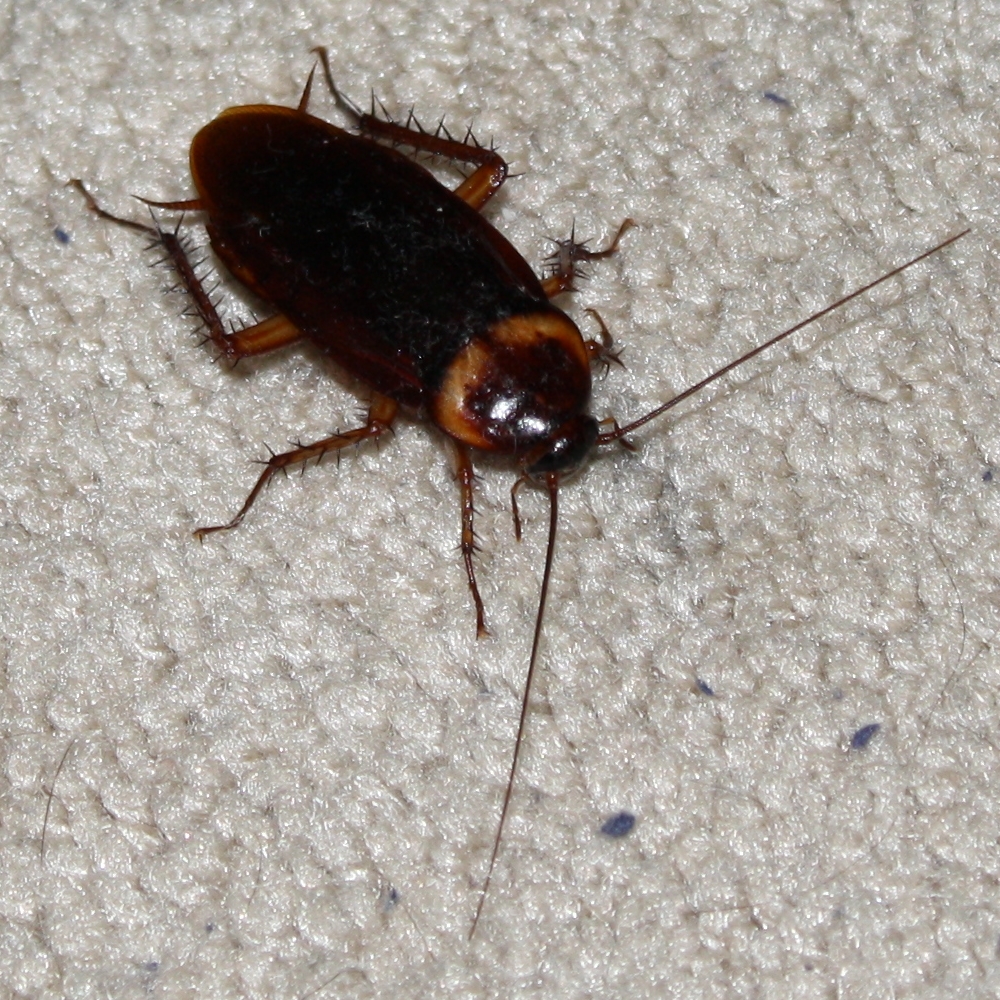 Michelle Rasmussen and colleagues at Case Western Reserve University have been able to convert the energy in a cockroach into electricity using a fuel cell. As a source of fuel, they use a sugar commonly found in insects called trehalose. A genetically engineered enzyme then breaks this down into glucose, which is then oxidised, releasing electrons to osmium ions. These ions then push electrons around the circuit, as an electric current, to the other electrode, which is covered in an enzyme called bilirubin oxidase. This second enzyme catalyses a reaction between hydrogen ions and oxygen, producing water.
Michelle Rasmussen and colleagues at Case Western Reserve University have been able to convert the energy in a cockroach into electricity using a fuel cell. As a source of fuel, they use a sugar commonly found in insects called trehalose. A genetically engineered enzyme then breaks this down into glucose, which is then oxidised, releasing electrons to osmium ions. These ions then push electrons around the circuit, as an electric current, to the other electrode, which is covered in an enzyme called bilirubin oxidase. This second enzyme catalyses a reaction between hydrogen ions and oxygen, producing water.
The components of the fuel cell, both enzymes and the osmium, are bonded to a gel-like polymer which surrounds the electrodes, keeping everything together.
These fuel cells produce a power of about 0.6 microwatts per square centimetre, which, while small, could with a little development be enough to power a small sensor, and occasionally send the data out through a wireless connection.
This technology may well be useful in humans in the long run, but it's main use is as part of a project to create insects capable of carrying sensors into otherwise inaccessible areas. This should enable the exploration of confined or dangerous spaces,either after accidents or for routine maintenance, and may lead to a generation of insect secret agents!
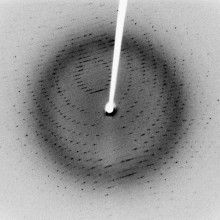
06:46 - Explosive X-ray diffraction
Explosive X-ray diffraction
One of the major ways of discovering the structure of molecules, particularly complex ones like proteins, is X-ray diffraction. This involves firing a beam of X-rays at a crystal and "reading" the pattern that the reflected x-rays produce. This is possible because crystals contain repeating molecular units, and so X-rays reflected from the crystal produce a distinct pattern that can be used to identify the structure of the molecule.
However, to decipher a large molecule you need to use very bright X-rays, which can damage the sample. This damage can create uncertainty as to what the original structure was.
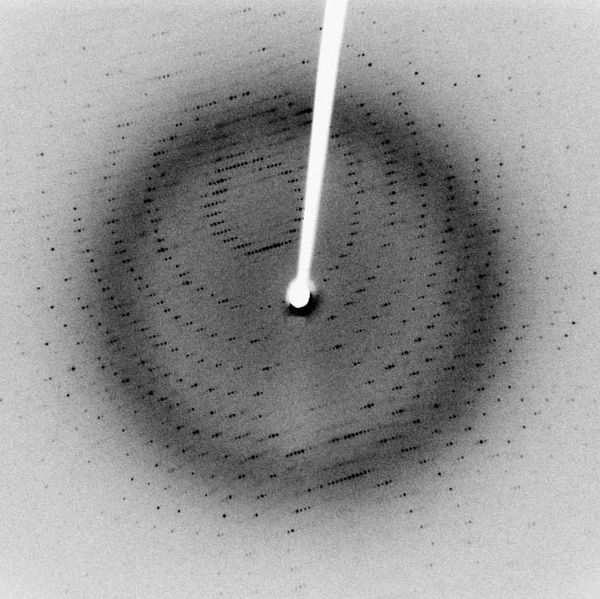 In a bizzarre twist, scientists from the Center for Free-Electron Laser Science in Hamburg may have reduced this problem by making the X-rays brighter - much brighter. They use an X-ray laser which produces X-rays a million trillion times more intense than sunlight. They only fire the laser for 30 femtoseconds, or 30 million billionths of a second, but in just a fraction of this time the sample absorbs so much energy it violently explodes.
In a bizzarre twist, scientists from the Center for Free-Electron Laser Science in Hamburg may have reduced this problem by making the X-rays brighter - much brighter. They use an X-ray laser which produces X-rays a million trillion times more intense than sunlight. They only fire the laser for 30 femtoseconds, or 30 million billionths of a second, but in just a fraction of this time the sample absorbs so much energy it violently explodes.
You would think this explosion would invalidate any results, but because the explosion is random, all it does is add a bit of background noise to the reflected X-ray pattern without distorting it at all, and because the laser is so much brighter, the results are much better than a conventional X-ray diffraction experiment. This means that, even though they explosively sacrifice their sample, scientists should be able to discover the structure of proteins more easily in the future.
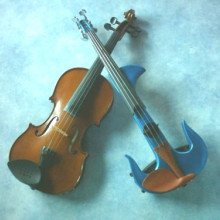
09:13 - Stradivarius reputation bows under pressure
Stradivarius reputation bows under pressure
The reputation of the famous Stradivarius and Guaneri names on violins has been dented by a new study showing that, in a blind test, musical professionals cannot tell the renowed instruments from modern counterparts.
In a trial published in PNAS and conducted, the authors report somewhat dubiously, in a hotel room at an international violin event in Indianapolis, 3 old violins dating from between 1700 and 1740 - two were Stradivarius and one was a Guaneri del Gesu model - were compared with three modern instruments built within the last few years.
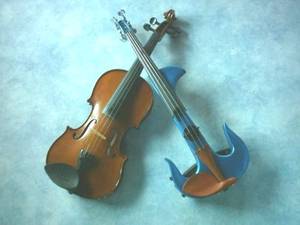 A panel of 21 professional musicians were asked to play each of the instruments and to rank the tone, playability, projection and response of the instruments, and also to pick out the ones they would most and least like to take home.
A panel of 21 professional musicians were asked to play each of the instruments and to rank the tone, playability, projection and response of the instruments, and also to pick out the ones they would most and least like to take home.
To avoid bias the participants were given welding goggles to wear to prevent them from picking up on any visual clues as to the age of the instruments they were playing, and the violins were further disguised with a blob of perfume applied to the chinrest to mask any olfactory giveaways.
Despite their combined $10 million price tag, which was over 100 times greater than the modern instruments, the violins rated least playable were those by the old masters. A Stradivarius was also the model most consistently listed as the instrument that the players would least like to take home with them. The assessors found no differences in the overall sonic performances between the old and new, however.
This is the first time that such a blind trial has been carried out and, albeit based on a small study sample, seems to suggest that the reputation of the greater masters' violins relates more to the price tag than the sweet music they make.
Indeed, as lead author Claudia Fritz from CNRS in Paris points out, "in a recent wine tasting experiment, it was found that increasing the stated price of a wine increased the level of 'flavour pleasantness' reported by subjects. Could," Fritz and her colleagues speculate, "a violinist's preference for a Stradivari violin be in part attributable to an awareness of its multimillion-dollar price tag and historical appearance, both of which may be signaled by its distinctive appearance?"
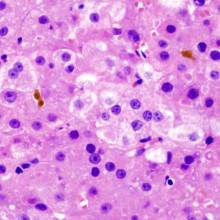
13:14 - Chimp Viruses Vaccinate Against Hepatitis C
Chimp Viruses Vaccinate Against Hepatitis C
Professor Paul Klenerman, University of Oxford
Chris - Two papers were published this week in the journal Science Translational Medicine discussing a promising new vaccine for hepatitis C. Now this is a virus that spreads from blood to blood contact and in over 80% of people who contract it, it sets up a persistent lifelong infection that progressively damages the liver and leads to cirrhosis and in some people, liver cancer. Now over 170 million people are infected with this worldwide and at the moment, there is no effective vaccine.
But now, scientists may have found a way to protect people by adding parts of the hepatitis C virus to a harmless cold virus called an adenovirus that actually normally infects chimpanzees. This modified virus triggers the immune system to mount a strong response against hepatitis C and that can prevent a person from developing a chronic infection if they're exposed to the virus for real at a later date. Ben Valsler spoke to Oxford University's Professor Paul Klennerman about the work.
Paul - The specialty of hep-C is that it sets up chronic infection in humans. So, even if you've got a relatively intact immune system, you don't seem to normally be able to mount an immune response that gets rid of the virus. If people do become chronically infected, some people handle that pretty well and in fact, they have very little inflammation in the liver which is the major consequence. But some people have much more inflammation in the liver and as a consequence, much more scarring on the liver tissue and so over time, they can develop end-stage liver disease, so cirrhosis and also liver cancer. It's turned out to be one of the main reasons people need transplantation in this country and in the western world. Having said that, the other interesting feature of hep-C is that a fraction of people end up clearing the virus on their own. That was actually very attractive from the point of view of a vaccine since we already know there's some form of immunity which is efficient.
Ben - What sorts of target have we been looking at for actually making a 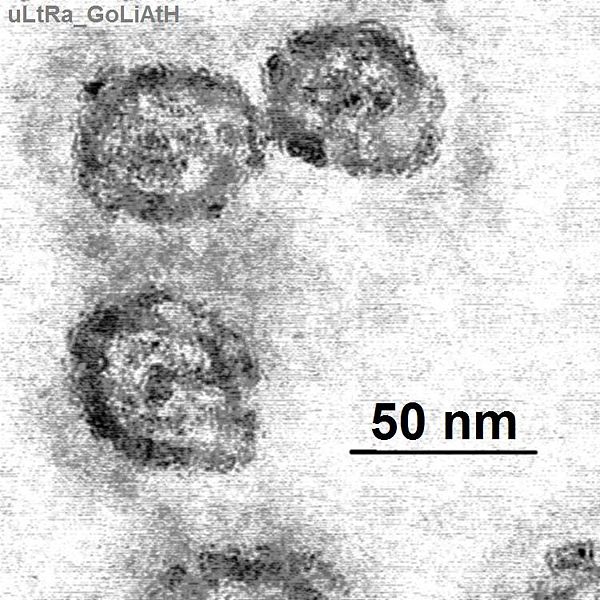 vaccine?
vaccine?
Paul - Broadly, the way you might think about making a vaccine is to make either an antibody response or a cellular immune response, so that's mounting a white cell response that targets the infected cells directly. The problem with hep-C in terms of antibody response is that the envelope of the virus is quite variable. So the alternative approach is to try and target the virus as it's replicating within cells and that really relies on mounting a T-lymphocyte response.
The T-cells will actually look at proteins which are generated during the process of viral infection, so that can be proteins which are part of the machinery of viral replication. If the T-cell really can recognise those cells, it will secrete chemicals, cytokines, which are directly anti-viral and will limit the viral infection and they can also kill the infected cells, so actually destroy the virus within it.
Ben - What are you now doing to target that and where are your "weapons" coming from?
Paul - The trick seems to be to stitch in the bit that you want - in our case, as I said, the internal proteins of hep-C - into something that's really going to get the immune responses fully activated. In our case, we've used an adenovirus. This combination of using an adenovirus with the hep-C internal proteins seems to produce very strong immune responses of the type that we see in people who naturally clear the infections.
Ben - Aren't we already immune primed against adenoviruses?
Paul - Yeah, that's a very good point. So I think one of the reasons adenoviruses are good is that the body is very used to seeing them, but exactly for the same reason, we already have immunity. So, we've gone for an approach using vectors which people won't have seen before or at least will have rarely have seen. So one of these is a human adenovirus, but just a rarer strain, and the other is a completely novel vector which comes from a virus found in a chimpanzee.
Ben - What sorts of results are you seeing? Are you actually getting the immune response that you expect?
Paul - There were two interesting bits of the trial. We exceeded our expectations with the priming. So if you take someone who's not got any immune response against hep-C, give them the vaccine, they generated very big responses. The levels were higher than we expected but we were pleased to see that also, they targeted a lot of different parts of the virus, because that's really important if you're going to overcome the variation that's already embedded within the viral genome. They did the kinds of things that we'd like the T-cells to do; so they proliferated well and they made the cytokines that I mentioned and they look like they would kill an infected cell.
The second stage is where we're trying to boost with the alternative adenovirus - we had two viruses and we gave a group of patients each one but in different orders. This boosting effect was a bit less than we'd expected and we think that's probably because of what we were just discussing, that once you've seen one adenovirus, you start to make immune responses against it. But the net result, which I think is the important one, is that after six months or a year, so well after the vaccination, we still had very big populations of cells which still seem to have the qualities that we'd really like in a protective response.
Ben - Is it safe to be using viruses that have adapted for other species?
Paul - We went through a number of safety committees to try and make sure this was as safe as possible. I think the key thing is that the viruses are made so they're replication incompetent. A large chunk of genetic material is removed and it's really not possible for the thing to repair itself to become an infectious virus. You can't really expect to make progress in this field if there's any even small hint of a risk from these things because you would be giving them to completely healthy people in very large numbers. So you have to eliminate as many risks as you can possibly imagine.
Ben - So, you've done everything you can to make it safe. It seems to be very effective. What's the next stage?
Paul - It's nice to see these responses but they're all in the test tube, so any vaccinologist would really want to know whether they were protective. What we'd have to do, and what we're planning to do with collaborators in this States, is to look at people who are at high risk of infection. In Baltimore, there's a very well established group of intravenous drug users where, because they use needles, they're putting themselves at risk of hep-C. So, they've designed a trial where they imagine that the rates of infection are sufficiently high that we could really see an impact from this vaccine. So that's planned to go ahead now that we've developed the vaccines to this stage.

19:41 - Spiderworms, Exploring Vents, Clues to deafness and Bulking up!
Spiderworms, Exploring Vents, Clues to deafness and Bulking up!
Randy Lewis, Utah State University; Alex Rogers, University of Oxford; David Ornitz, University of Washington; Athanassia Soritopoulos, INSERM
Spidersilk from Silkworms
Silkworms have been genetically engineered to spin spider silk proteins, producing a tougher, more elastic silk material.
Farming of spiders for their silk production is challenging due to small production levels and cannibalism within populations. Publishing in the journal
PNAS, Randy Lewis and colleagues from the Utah State University overcame this problem by creating transgenic silk worms containing spider genes for silk elasticity and tensile strength resulting in a composite of worm and spider silk produced in large quantities.
Randy - Certainly, one area that we're very interested in is artificial ligaments and artificial tendons for ligament and tendon repair. We've got collaborators who are interested in using it for helping them build a very strong bone matrix, or very fine sutures. Beyond the biomedical, there's interest in things like parachutes. We can also match different applications. So for a tendon, you want something that's very strong and not very elastic. For a ligament, you want something that's strong and very elastic. So, we'll be custom designing our genes and the silkworms to make a specific silk that has a very specific application.
New Species at Antarctic Vents
Unique communities of marine species have been found on the Antarctic sea floor, living in hydrothermal vents off the coast of the East Scotia ridge in the Southern Ocean.
Using remotely operated vehicles, Alex Rogers' team from the University of Oxford discovered new species of yeti crab, stalked barnacles and seven-armed starfish, unseen anywhere else in the world, whilst animals such as tube worms and vent crabs, commonly associated with hydrothermal vents, were nowhere to be seen.
The team suggest the southern ocean may act as a barrier, resulting in a more diverse vent ecosystem globally than previously thought.
Alex - The southern ocean may act as a gateway for the dispersal of some of these animals from one ocean to another, but that very harsh environmental condition of the southern ocean probably means it acts as a barrier for the dispersal of other groups. The East Scotia region is somewhere between 10 and 20 million years old, so it would seem that these animals may have become isolated on the ridge shortly after it was formed. The distribution of vent animals and the evolution of hydrothermal vent faunas around the globe is much more complicated than we previously suspected.
New gene target identified for deafness
A new gene identified in mouse models could provide insight into the causes of human deafness.
David Ornitz and colleagues from the Washington University school of medicine in St Louis found that the gene,
named FGF20, which codes for a family of proteins called fibroblast growth factors, was crucial for the formation of outer hair cells - sensory cells needed to amplify sound in the inner ear.
The gene has previously been linked with inherited deafness in humans and could lead to treatments for hearing loss.
David - FGF20 is a critical signal for the formation of outer hair cells and might be a deafness related gene in humans and it is our hope that FGF20 may be useful to either protect or help to regenerate sensory hair cells that have been damaged by noise, by drugs, or through the ageing process.
The Science behind Bulking Up
And finally, as many of us start the new year with a resolution to workout, the key factors needed for our muscles to grow and bulk up during a workout have been discovered by scientists at the Inserm institute in France.
Working with mice, Athanassia Sotirorpoulos identified the need for serum response factor, or SRF, in working muscle fibres to signal the proliferation of satellite stem cells found within muscle which then grow and fuse to existing muscle fibres resulting in growth.
Muscle was shown not to grow in mice lacking the SRF gene.
Athanassia - The implication is that, for example, during ageing, there is a muscle atrophy that is called Sarcopenia or when you are immobilised at bed, you get very important muscle atrophy. So, if we can identify all the genes that are really involved in controlling muscle growth then we can use those genes to have less wasting during ageing or during your bed resting.
The work was published in the current edition of the journal Cell Metabolism.
Related Content
- Previous Do Sunglasses Cause Sunburn?
- Next What's Inside Your Nappy?










Comments
Add a comment